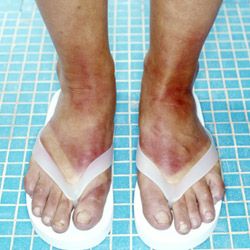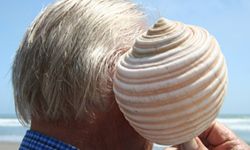If you're bald, you may have learned the hard way that you need to put on a hat or put sunscreen on your head. People with hair may think that their head is protected, but it's not. Whether you have thinning hair or thick, luscious locks, the sun will find its way to your scalp. If you're not wearing a hat, you need to apply sunscreen.
Sunscreen in the hair may sound like a beauty queen's worst nightmare, but you can still look pretty fashionable if you seek out a gel or spray sunscreen. Pay special attention to any bald spots or parts in your hair, particularly if you're sporting braids.
It's important to show your scalp some sunscreen love because according to a 2008 study in the Archives of Dermatology, melanoma on the scalp and the neck results in much quicker death than melanoma that appears elsewhere on the body [source: Stacy]. That may be due to how melanoma cells form and spread in those areas, as well as the fact that hair can hide the damage and prohibit early detection. In the long run, it's better to sacrifice your style and put some SPF on your scalp.


